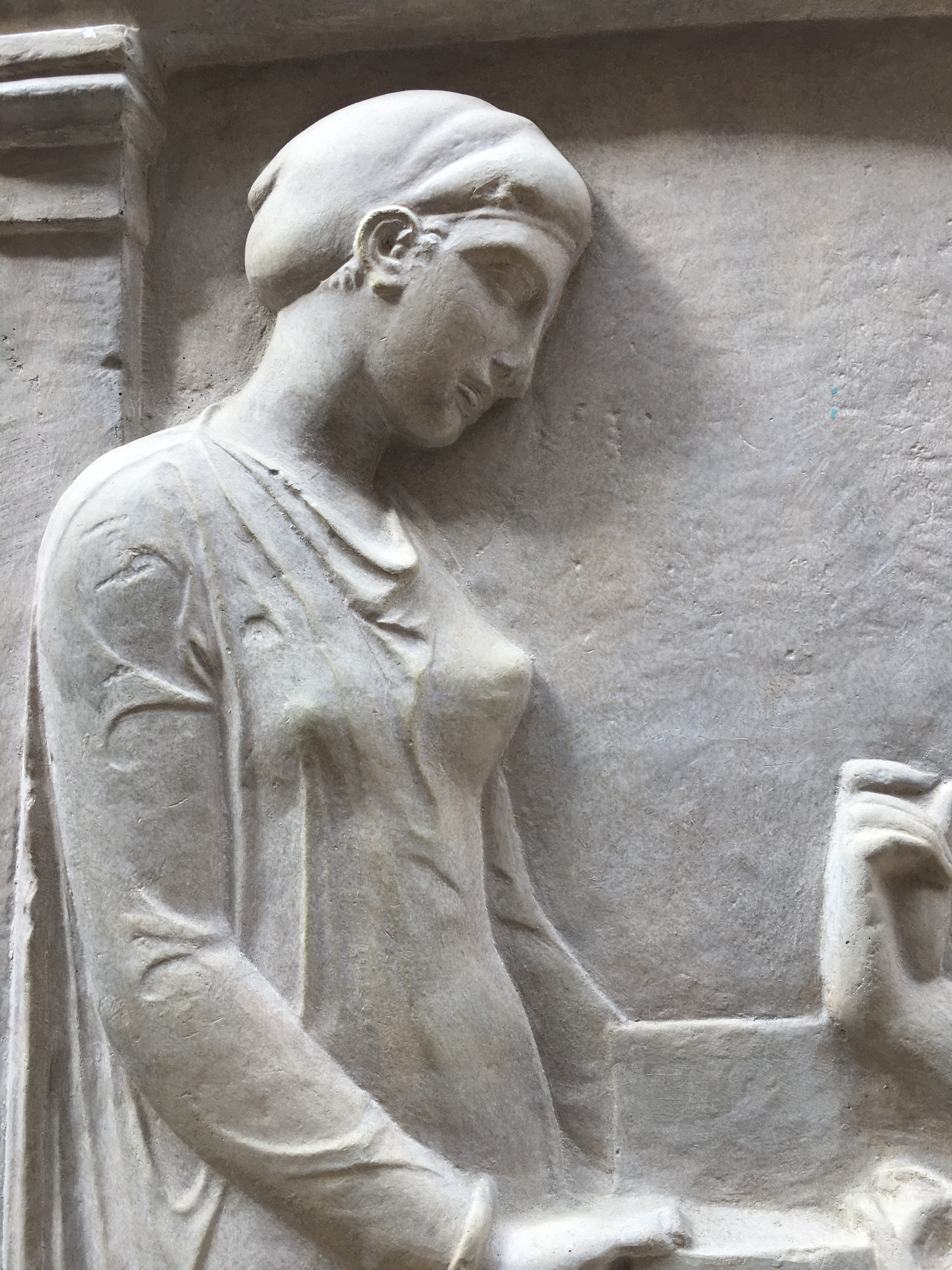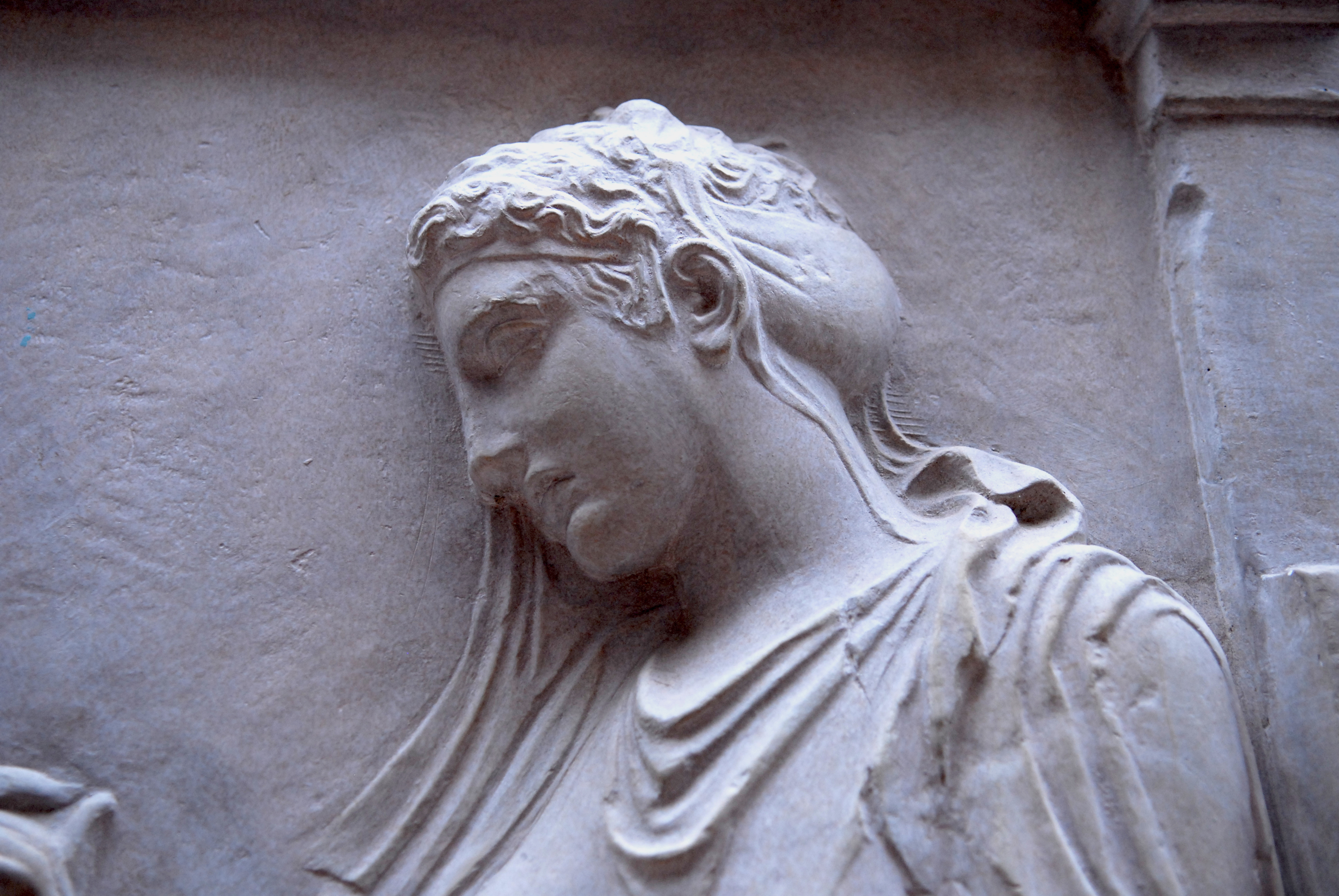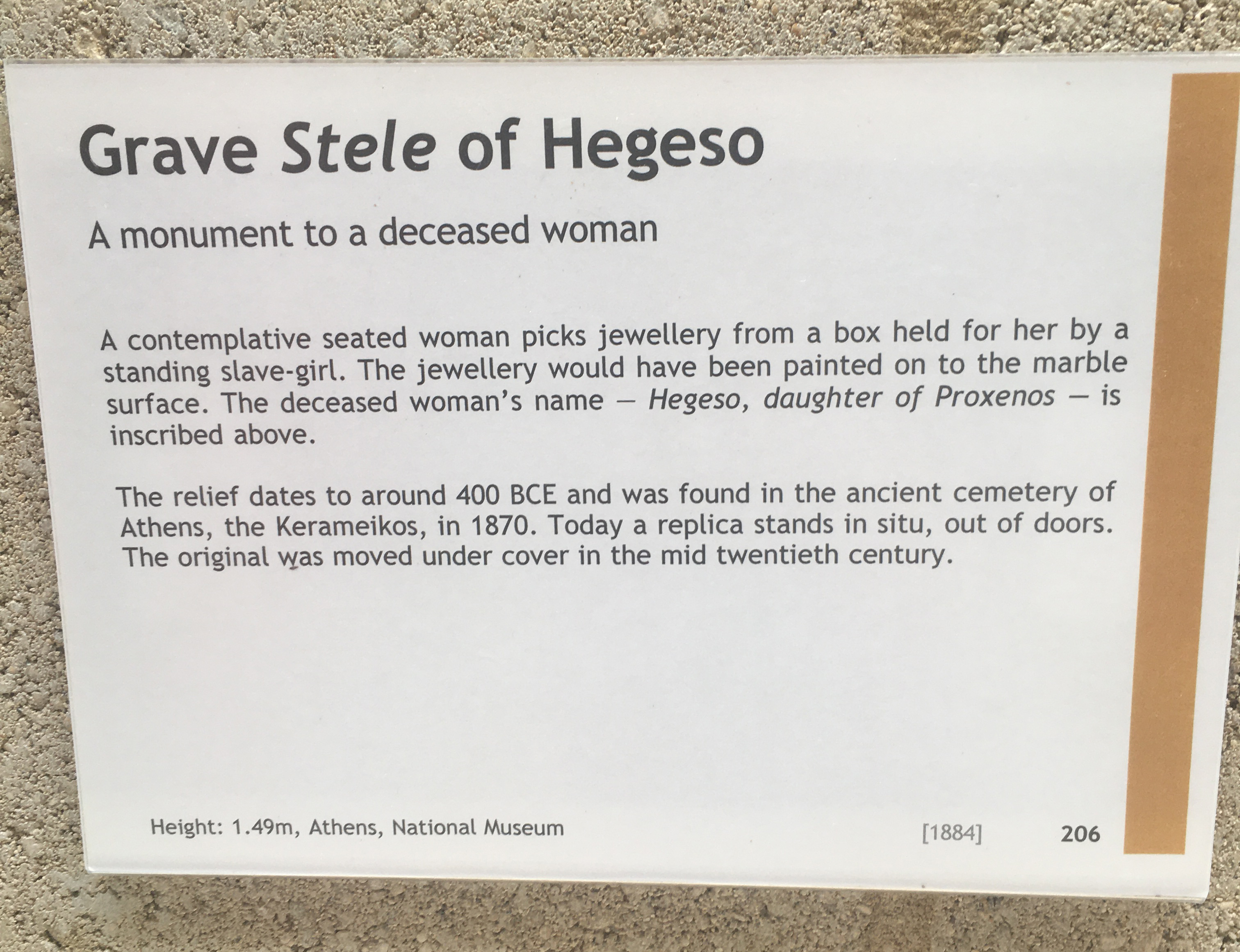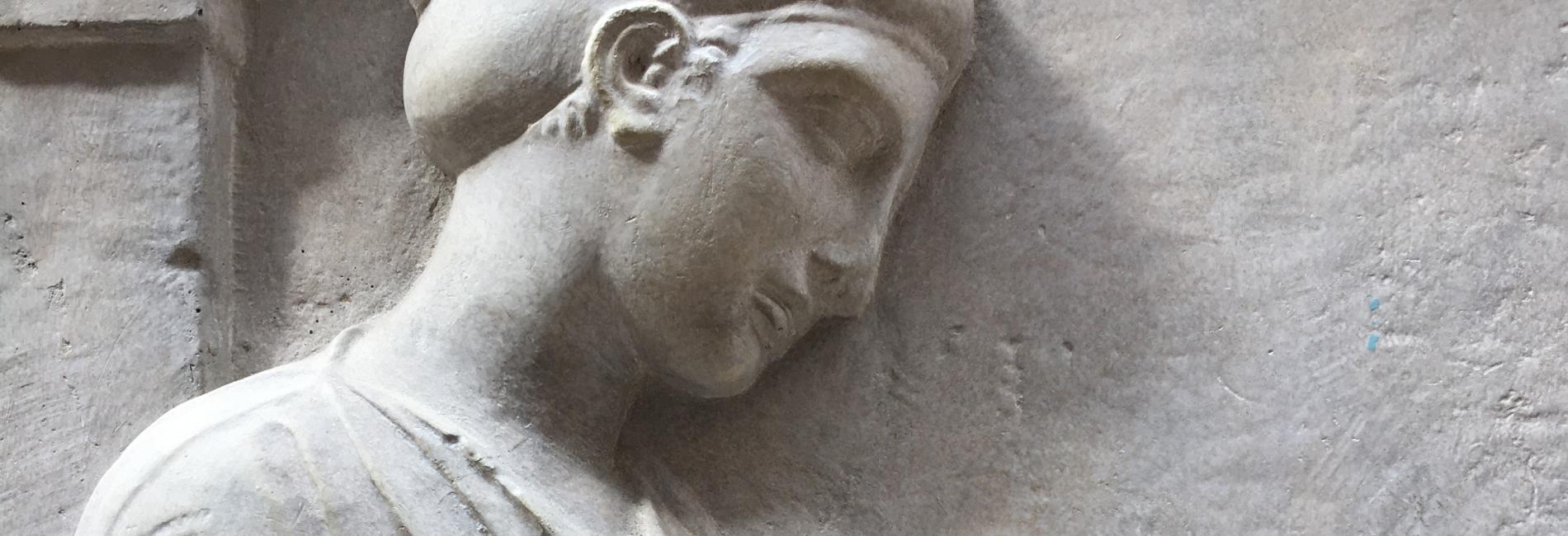How can we give voice to an anonymous slave who died two thousand years ago?
It is notoriously difficult to view the ancient world through enslaved eyes. Our classical Greek sources are written by elite men, largely for elite male audiences; no enslaved person’s personal account has been discovered. This stele, or tombstone - of which a plaster cast is now in the Museum of Classical Archaeology - shows two female figures. One of the women is seated and bigger, with a name – Hegeso, daughter of Proxenos, of Melite – carved above her head. The other is smaller and wears a simple long-sleeved dress. She has no name, and was likely a slave. How might we give her a voice?
Susanne Turner, Curator of the Museum of Classical Archaeology, tells us more.
More information
Images
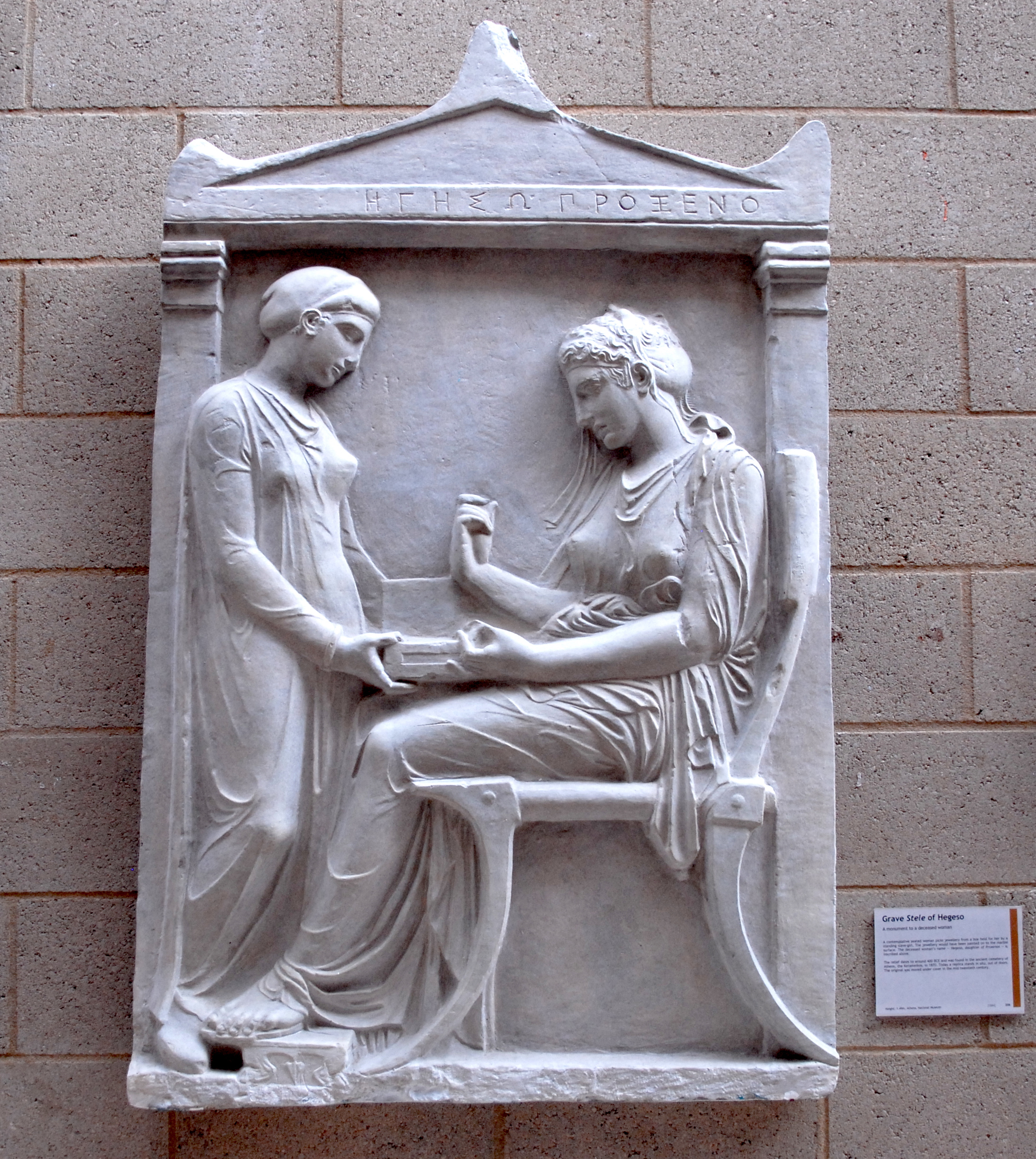
The monument. It is likely Hegeso is the seated woman on the right, and the smaller woman in plain clothes is her slave, holding out her jewellery box.
